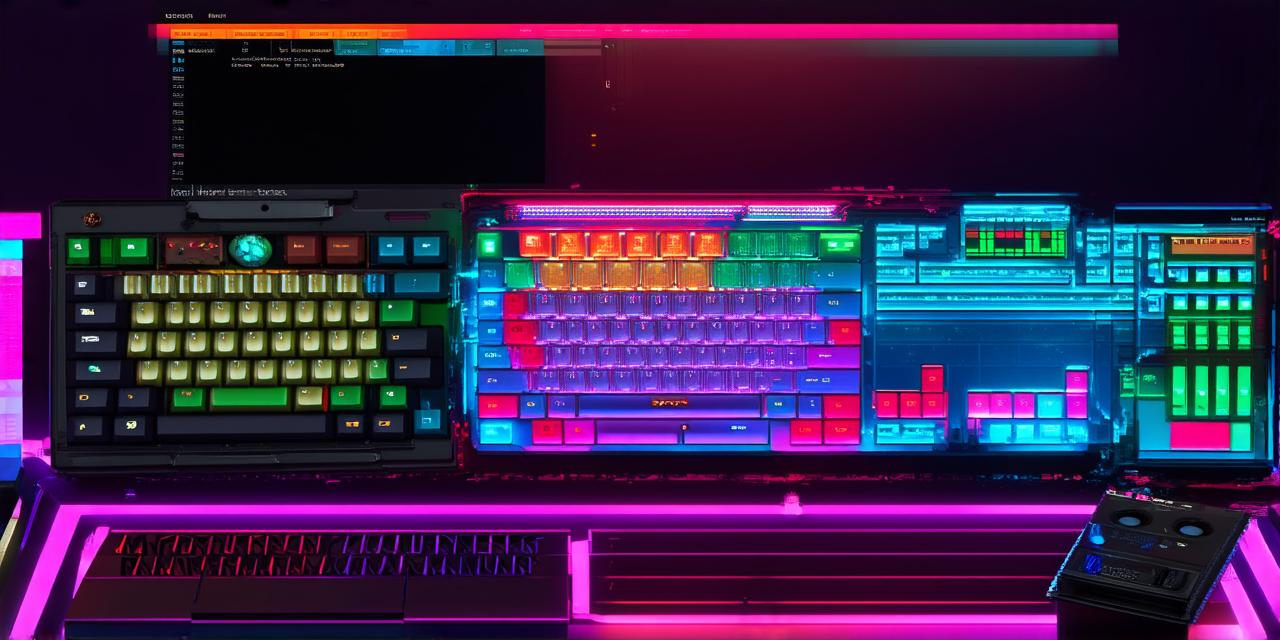Introduction
As a game developer, you know that music plays a vital role in creating an immersive and engaging gaming experience. Whether it’s setting the mood, driving the emotion, or guiding the player through different levels, video game music has the power to make or break a game’s overall success. However, creating high-quality video game music can be a daunting task, especially for those who have little or no musical experience.
In this article, we will provide you with a step-by-step guide on how to start making video game music, including tips and tricks from experienced game music composers, case studies, and personal experiences. We will cover topics such as selecting the right software, understanding the basics of music theory, and techniques for creating engaging and memorable melodies.
Step 1: Choose Your Music Software
The first step in making video game music is to choose your music software. There are many different options available on the market, each with its own unique features and capabilities. Some popular choices include Ableton Live, Logic Pro, FL Studio, and GarageBand.
Each of these programs has its strengths and weaknesses, so it’s important to choose the one that best fits your needs and budget. For example, if you’re just starting out and don’t have a lot of experience with music production, GarageBand may be a good choice. It’s free and user-friendly, making it easy to get started quickly.
On the other hand, if you’re looking for more advanced features and functionality, Ableton Live or Logic Pro may be better suited to your needs. These programs offer more complex sequencing and arrangement tools, as well as a wider range of plugins and effects.
Step 2: Understand the Basics of Music Theory
Before you start creating music, it’s important to have a solid understanding of the basics of music theory. This includes concepts such as melody, harmony, rhythm, meter, and chord progressions.
There are many resources available online to help you learn these concepts, including tutorials, videos, and courses. Some popular options include Music Theory 101 by Justin Sandercox, The Art of Music Production by Jonathan Levine, and Introduction to Music Theory by Richard Devine.
It’s also a good idea to experiment with different chord progressions and melodies to get a feel for how they work together. This will help you develop your own unique sound and style.
Step 3: Create Engaging and Memorable Melodies
One of the key elements of video game music is its ability to capture the player’s attention and create an emotional connection. To do this, you need to create melodies that are engaging and memorable.
There are many different techniques you can use to create effective melodies, including using motifs, repeating patterns, and incorporating unexpected changes. You can also experiment with different scales, modes, and chord progressions to find the ones that work best for your game.
One of the best ways to create engaging melodies is to listen to other great video game music and take inspiration from it. Pay attention to the way the melody evolves over time, the use of dynamics and phrasing, and the overall emotional impact of the piece. By studying these techniques, you can develop your own unique sound and style.
Step 4: Use Sound Effects and Instruments to Enhance Your Music
Another important aspect of video game music is its use of sound effects and instruments. These elements can help bring the game world to life, add depth and texture to the music, and create a more immersive experience for the player.
When choosing sound effects and instruments, it’s important to consider their placement in the mix and how they will complement the overall sound of the piece. For example, you might use soft pads and strings for the main melody, while adding percussion and brass sections to build tension during key moments.
It’s also a good idea to experiment with different instruments and effects to find the ones that work best for your game. This can include anything from traditional orchestral instruments to electronic sounds and samples.
Case Study: The Music of “The Legend of Zelda”
One great example of video game music that has stood the test of time is the music of "The Legend of Zelda". Composed by Koji Kondo, the music for this iconic series features memorable melodies, intricate arrangements, and clever use of sound effects.
Kondo’s approach to creating music for "The Legend of Zelda" was heavily influenced by his love of classical music, particularly the works of Bach and Beethoven. He used a combination of traditional orchestral instruments and electronic sounds to create a unique and immersive experience for the player.
One of the key elements of Kondo’s music is its use of motifs and repetition. He would often take short phrases or ideas and repeat them throughout the piece, creating a sense of cohesion and familiarity that helped the player feel at home in the game world.
Another important aspect of Kondo’s music is its use of dynamic contrast. He would build tension and release it in unexpected ways, creating moments of intense excitement and emotional impact. This helped keep the player engaged and invested in the story and world of "The Legend of Zelda".
Personal Experience: Making Music for “My First Game”
As a game developer who has created my own video game music, I can tell you firsthand how rewarding and challenging it can be. When making music for my first game, I started by choosing a few key themes and ideas that I wanted to explore throughout the piece. I then experimented with different chord progressions and melodies to find the ones that worked best for each scene.

One of the biggest challenges I faced was finding the right balance between emotional impact and gameplay functionality. I had to make sure that the music was engaging enough to capture the player’s attention, but not so complex or distracting that it detracted from the gameplay experience.
To achieve this, I spent a lot of time testing the music in the game and making adjustments as needed. I also worked closely with the game’s lead
